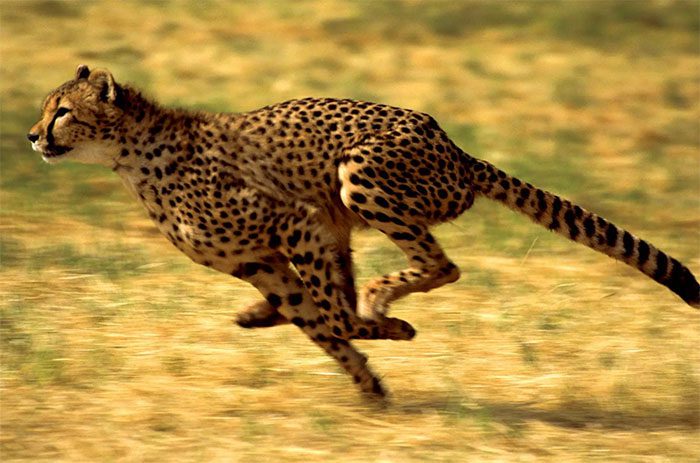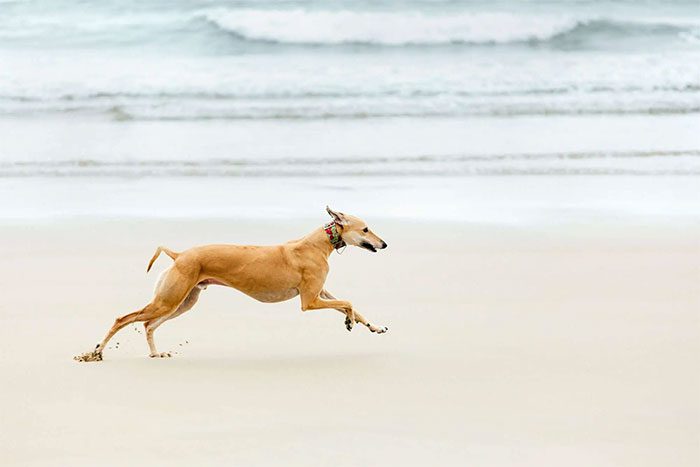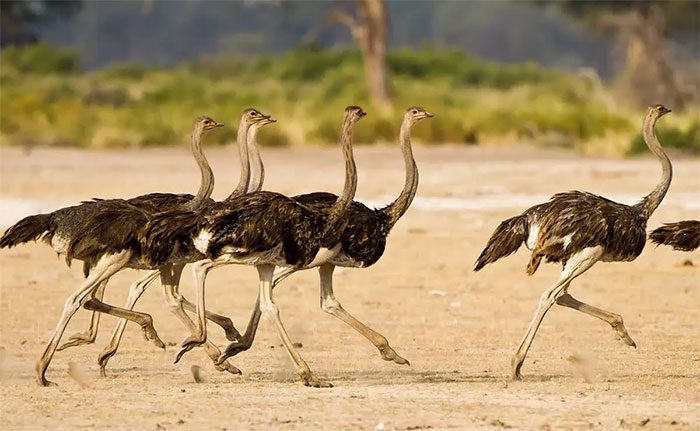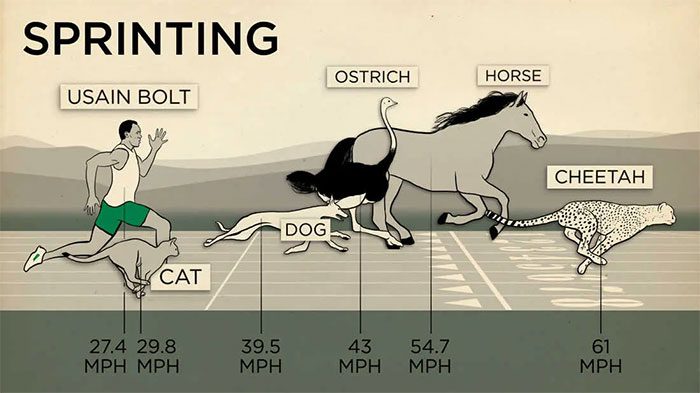Humans are creatures with an advantage in running. Through running, humans can gain numerous physical and psychological benefits, including improved lung function, enhanced immunity, pain relief, and reduced psychological stress.
However, can we say that humans are the best runners in nature? Are there any creatures that can run better than humans? Below, we will conduct a scientific analysis of this issue and discuss the advantages and disadvantages of human running.

The cheetah is an excellent runner.
Advantages of Humans in Running
The advantages of the human body in running are evident in our lack of fur covering the body like other animals, as well as the widespread development of sweat glands. Additionally, humans possess remarkable endurance, which are advantages in running that typical animals cannot match.
Endurance: Humans demonstrate excellent endurance when running for long periods. We can run for extended durations and expend energy, a significant advantage over other animal species.
For example, average-distance runners can sustain running for several kilometers while maintaining a high training level over time. This endurance is one of the most notable advantages of running in humans.

It is estimated that an average person can run at a speed of about 20 km/h for short distances. For long-distance running, this speed is around 10 km/h. However, these figures are not fixed as they depend on individual health and fitness levels.
Better Temperature Regulation: Humans regulate body temperature through the evaporation of sweat, a mechanism crucial during running.
Because humans can cool down through sweating, we adapt better to hot and humid climates—environments that are unfavorable for many other animal species.
Resilient Feet: The human foot plays a vital role in running. Unlike other animals, the human foot is resilient enough to support long-distance running.

The resilient foot protects human bones and joints, reducing the risk of injury.
High IQ: Humans possess higher intelligence than other animals, and this advantage is also crucial in running. Humans can adjust their speed and running rhythm to maximize the benefits of exercise and minimize the risk of injury.
For instance, humans can achieve endurance training effectiveness by adjusting stride length and rhythm to keep heart rate and breathing steady.
Self-Motivation: Humans can use psychological tools to motivate themselves to complete running sessions.
For example, individuals can overcome fatigue and pain through thought control to achieve sustained workout effectiveness over extended periods. This self-motivation is another advantage of human running.
Not Many Animal Species Possess Strong Running Abilities
Dogs are outstanding runners. They enjoy long-distance running, with stamina and speed surpassing those of humans. Dogs can cover longer distances at higher speeds, and their muscles and respiratory systems are better adapted for prolonged running.

Dogs are excellent runners.
Ostriches are another species with remarkable running abilities. They can maintain a relatively high speed for long durations, reaching maximum speeds of up to 70 km/h. The unique physiology of ostriches protects their feet and joints, allowing them to run on sandy terrain.

Ostriches are another species with outstanding running abilities.
Cameleons are animals with excellent endurance. They can run in hot and dry conditions with remarkable stamina and speed. The long legs and unique muscular structure of camels enable them to run for extended periods.
Cheetahs, also known as hunting leopards, are another exceptional running species. Although cheetahs are extremely fast, they can also maintain relatively high speeds over long distances. The muscles and respiratory system of cheetahs are suited for prolonged running.

Humans are not entirely sure they are the best runners in nature.
Humans are among the creatures with advantages in running, but it is not entirely certain that humans are the best runners in nature. Other animals also possess strong running capabilities, and these species have physiological and morphological characteristics that support them in long-distance running.
While humans have many advantages in running, they still have much room for improvement in speed and endurance compared to other species. Therefore, we should continue researching the physiological mechanisms of human running and explore better training methods to further enhance human running capabilities.




















































